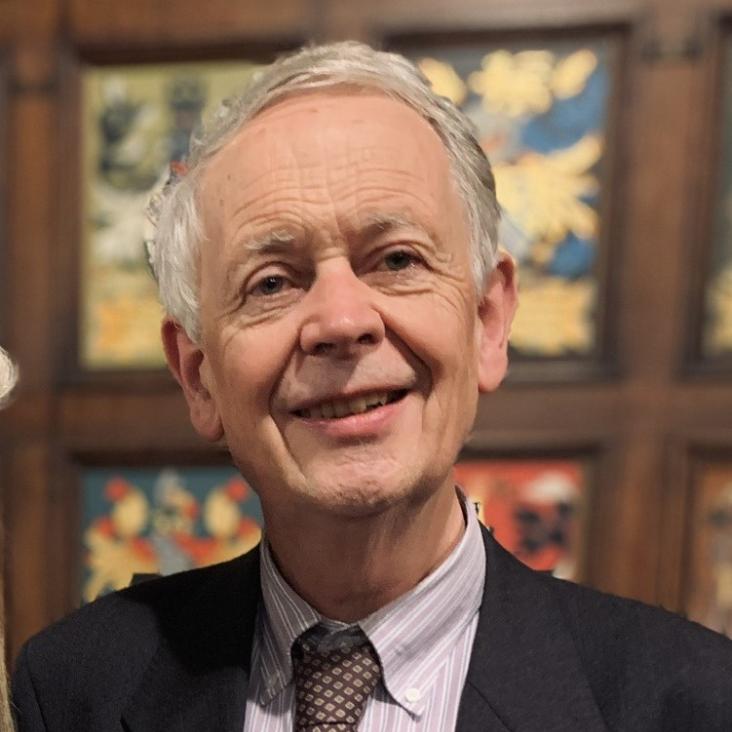Mass models of the Milky Way
ArXiv astro-ph/9612059 (1996)
Abstract:
A parameterized model of the mass distribution within the Milky Way is fitted to the available observational constraints. The most important single parameter is the ratio of the scale length R_d* of the stellar disk to R0. The disk and bulge dominate v_c(R) at RThe outer rotation curve of the Milky Way
ArXiv astro-ph/9612060 (1996)
Abstract:
A straightforward determination of the circular-speed curve vc(R) of the Milky Way suggests that near the Sun, vc starts to rise approximately linearly with R. If this result were correct, the Galactic mass density would have to be independent of radius at R ~> R0. We show that the apparent linear rise in v_c arises naturally if the true circular-speed curve is about constant or gently falling at R0 < R ~< 2 R0, but most tracers that appear to be at R ~> 1.25 R0 are actually concentrated into a ring of radius ~1.6 R0.Microlensing Optical Depth of the COBE Bulge
ArXiv astro-ph/9612026 (1996)
Abstract:
We examine the left-right asymmetry in the cleaned COBE/DIRBE near-infrared data of the inner Galaxy and show (i) that the Galactic bar is probably not seen very nearly end-on, and (ii) that even if it is, it is not highly elongated. The assumption of constant mass-to-light ratio is used to derive simulated terminal-velocity plots for the ISM from our model luminosity distributions. By comparing these plots with observed terminal velocities we determine the mass-to-light ratio of the near-IR bulge and disk. Assuming that all this mass contributes to gravitational microlensing we compute optical depths $\tau$ for microlensing in Galactic-centre fields. For three models with bar major axis between $10\deg-25\deg$ from the Sun-Galactic Center line, the resulting optical depths in Baade's window lie in the range $0.83\times10^{-6} \lta \tau \lta 0.89\times10^{-6}$ for main-sequence stars and $1.2\times10^{-6} \lta \tau \lta 1.3\times10^{-6}$ for red-clump giants. We discuss a number of uncertainties including possible variations of the near-infrared mass-to-light ratio. We conclude that, although the values predicted from analyzing the COBE and gas velocity data are inconsistent at the $2-2.5\sigma$ level with recent observational determinations of $\tau$, we believe they should be taken seriously.The photometric structure of the inner Galaxy
ArXiv astro-ph/9609066 (1996)
Abstract:
The light distribution in the inner few kiloparsecs of the Milky Way is recovered non-parametrically from a dust-corrected near-infrared COBE/DIRBE surface brightness map of the inner Galaxy. The best fits to the photometry are obtained when the Sun is assumed to lie $\sim14\pm4\pc$ below the plane. The recovered density distributions clearly show an elongated three-dimensional bulge set in a highly non-axisymmetric disk. In the favoured models, the bulge has axis ratios $1{:}0.6{:}0.4$ and semi-major axis length $\sim2\kpc$. Its nearer long axis lies in the first quadrant. The bulge is surrounded by an elliptical disk that extends to $\sim2\kpc$ on the minor axis and $\sim3.5\kpc$ on the major axis. In all models there is a local density minimum $\sim2.2\kpc$ down the minor axis. The subsequent maximum $\sim3\kpc$ down the minor axis (corresponding to $l\simeq-22\deg$ and $l\simeq 17\deg$) may be associated with the Lagrange point L$_4$. From this identification and the length of the bulge-bar, we infer a pattern speed $\Omega_b\simeq 60-70\kms\kpc^{-1}$ for the bar. Experiments in which pseudo-data derived from models with spiral structure were deprojected under the assumption that the Galaxy is either eight-fold or four-fold symmetric, indicate that the highly non-axisymmetric disks recovered from the COBE data could reflect spiral structure within the Milky Way if that structure involves density contrasts greater than $\gta 3$ at NIR wavelengths. These experiments indicate that the angle $\phi_0$ between the Sun--centre line and a major axis of the bulge lies near $20\deg$.Dynamical Models for the Milky Way
ArXiv astro-ph/9601040 (1996)


